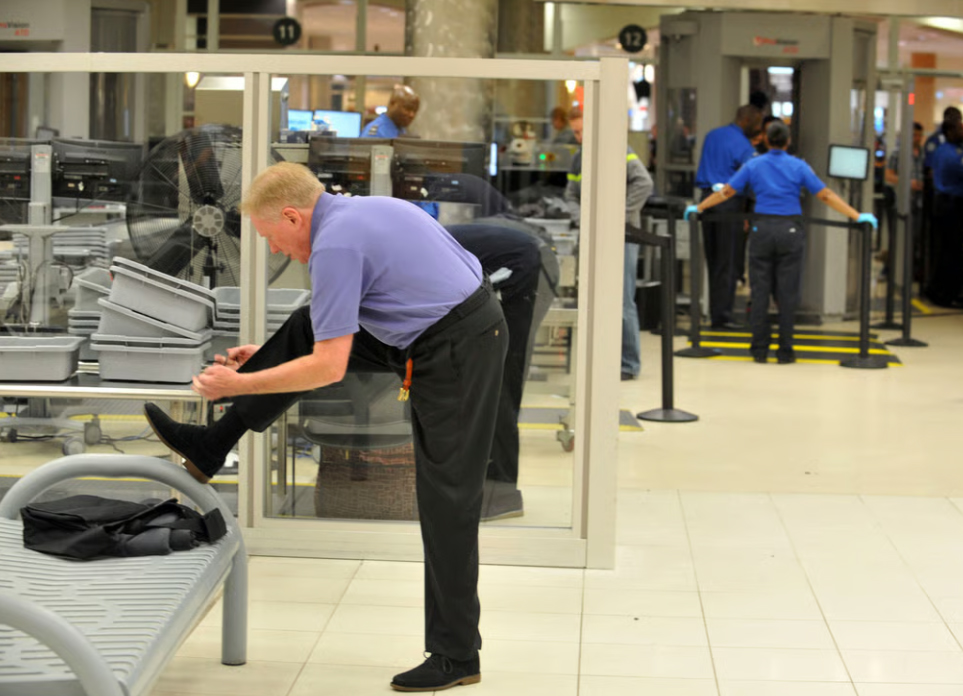The change, announced on 8/7 by US Homeland Security Secretary Kristi Noem, takes immediate effect nationwide. Tests show that modern security equipment allows passengers to keep their shoes on without compromising aviation safety.
"The Transportation Security Administration (TSA) will no longer require shoe removal at security checkpoints," Noem said. However, in special cases, security personnel may still ask passengers to remove their shoes for further inspection.
 |
Passengers remove their shoes before passing through a screening gate at Hartsfield-Jackson Atlanta International Airport, Atlanta, USA, before the no-shoe-removal policy was announced. Photo: AP |
Passengers remove their shoes before passing through a screening gate at Hartsfield-Jackson Atlanta International Airport, Atlanta, USA, before the no-shoe-removal policy was announced. Photo: AP
The shoe removal rule was implemented in 2006, following the 2001 attempt by Richard Reid to detonate explosives hidden in his shoes on a flight from Paris to Miami.
For almost 20 years, all passengers aged 12 to 75 had to remove their shoes for screening along with their carry-on luggage.
Some passengers were previously exempt from this procedure if they enrolled in the TSA PreCheck program for approximately 80 USD for 5 years. This program allows passengers to keep their shoes, belts, and light jackets on and leave laptops and liquids in their bags.
The TSA was established after the 9/11 attacks by order of President George W. Bush, replacing private companies that previously handled airport security. The agency continually updates its technology, incorporating facial recognition and implementing Real ID cards.
Despite these advancements, TSA procedures remain a major source of frustration for many passengers. In April, former US Transportation Secretary Sean Duffy acknowledged that the TSA was the "number one complaint" in the aviation industry.
Anh Minh (SCMP)












